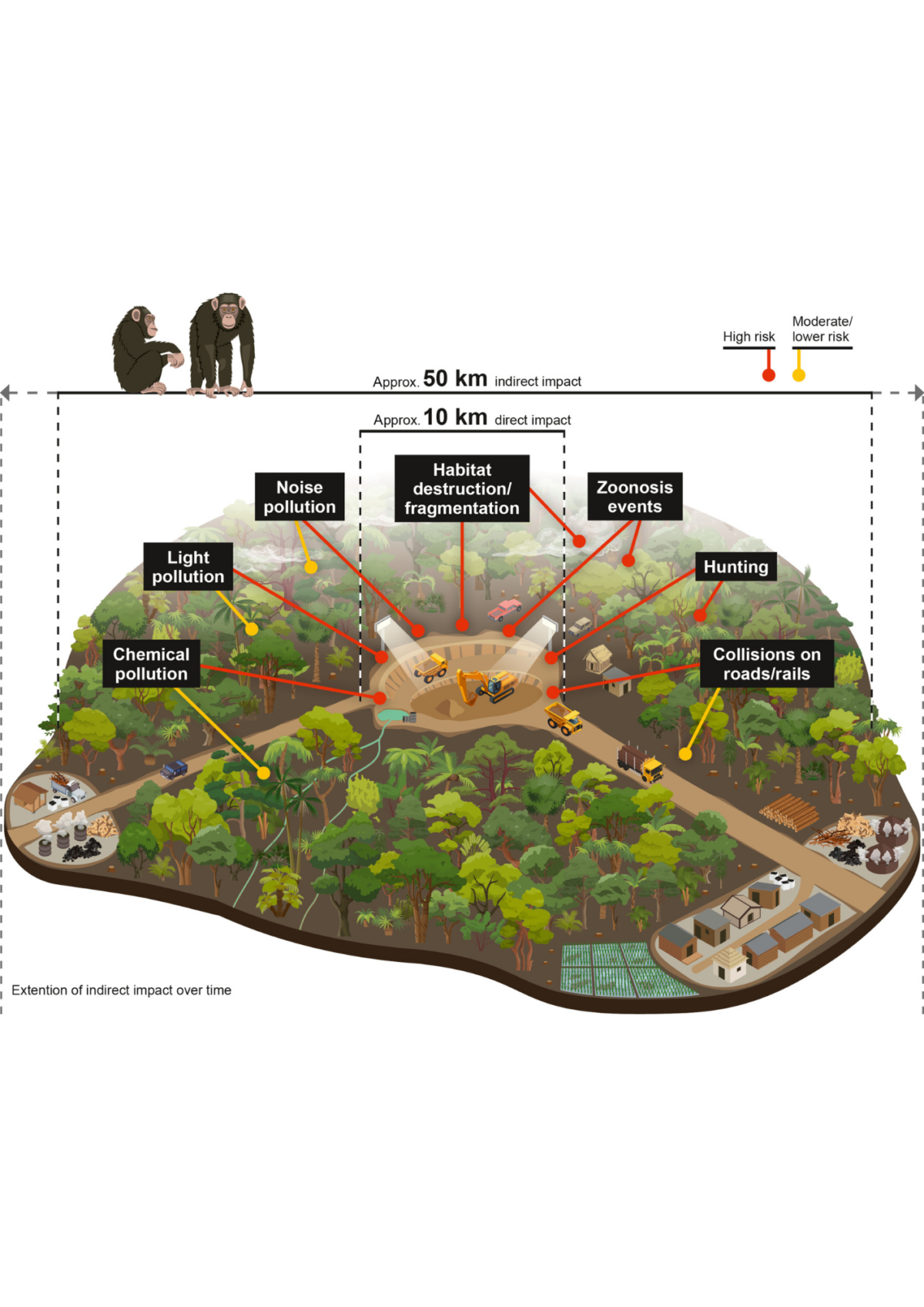📐 Methodology
The authors use African great apes, mostly the chimpanzee population, as a case study to quantify the potential impact of industrial mining on wildlife population abundance. They use data spanning 17 African nations over an area of 1,507,811 km2 to estimate the extent of potential direct and indirect negative impact from mining activities on ape abundance in and around operational and preoperational mining areas. They focused their investigation on three main areas:
- The number of African apes that could potentially be negatively affected by mining activities across their range
- Whether mining areas often overlapped with high ape density areas
- The extent to which great ape survey data was available across these mining areas
Based on this data, the authors quantified the spatial overlap of mining areas with likely “critical habitats” triggered by biodiversity features unrelated to apes, as well as identified hotspots of spatial overlap of high mining areas and ape densities.
This study provides an important analysis on the role of non-state actors in the shift towards clean energy technologies and their impacts on biodiversity. On the larger scale, it has important implications on the potential conflict between climate and biodiversity agendas, which needs to be taken account considering the convergence of action under the three Rio conventions.
🔎 Key Takeaways
There is currently an increase in demand for critical minerals such as copper, lithium, nickel and cobalt which are required for clean energy technologies. Since Africa contains around 30% of the world’s mineral resources, this increased demand presents an opportunity for growth in Africa’s mining sector.
However, up to a third of Africa’s great apes are being threatened by the boom in mining projects through habitat loss, pollution and disease. Moreover, mining projects can make habitats more accessible to hunters and farmers. This is important as Africa is home to all 14 taxa of great apes that are currently listed as Endangered or Critically Endangered. Great apes are also umbrella species (the conservation of ape populations overlap with conservation priorities for other plant and animal species) and their habitats play an important role for global climate change mitigation.
This paper finds that the largest mining impacts on apes are in west African countries, specifically Liberia, Sierra Leone, Mali and Guinea. In Guinea, over 230,000 chimpanzees, or 83% of the population, could be directly or indirectly affected by mining activities. More generally, the paper finds that 20% of mining areas overlapped with regions considered unique for biodiversity, or “critical habitats”.
It is important to note that mining companies are not required to make biodiversity data publicly available, and so the impact of mining projects on apes and other species may be greater than what is already known.



